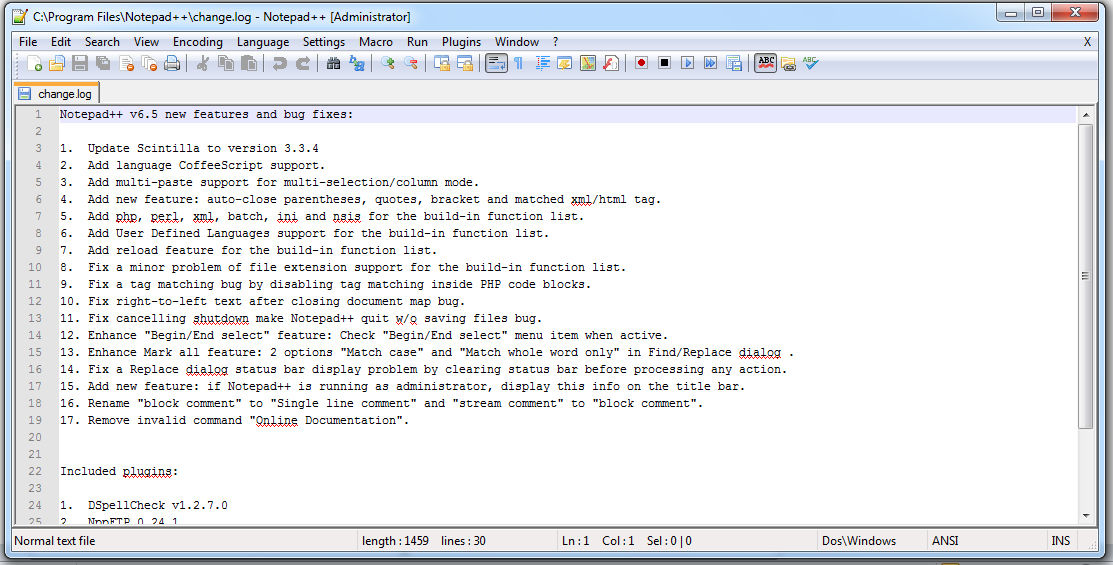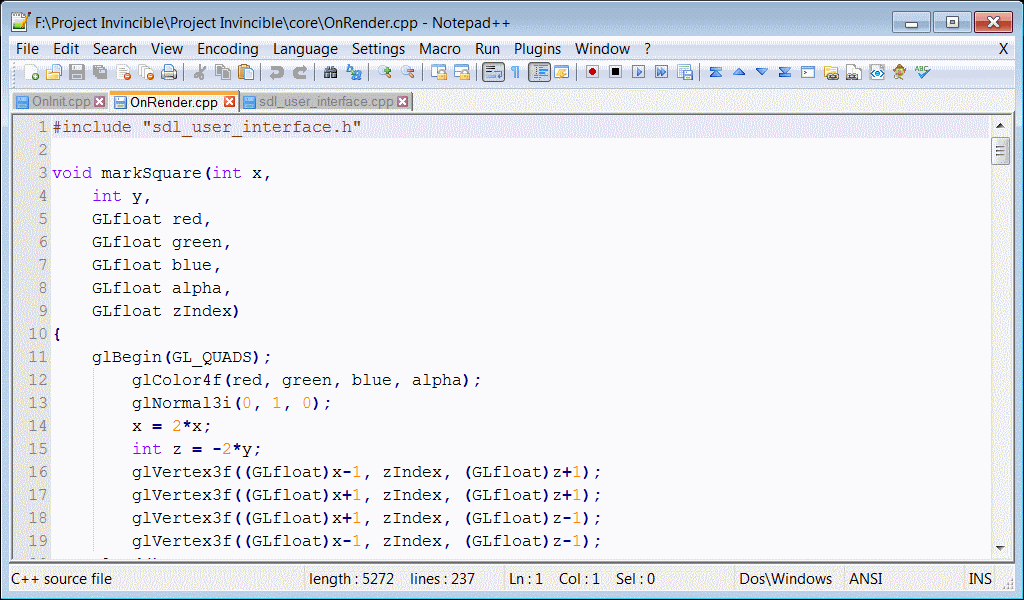

- #Basic notepad program code software
- #Basic notepad program code code
- #Basic notepad program code windows
Source code can be proprietary or open, and licensing agreements often reflect this distinction. In large program development environments, there are often management systems that help programmers separate and keep track of different states and levels of source code files.
#Basic notepad program code software
Programmers can use a text editor, a visual programming tool or an integrated development environment ( IDE) such as software development kit ( SDK) to create source code. Source code and object code are sometimes referred to as the "before" and "after" versions of a compiled computer program. For script (noncompiled or interpreted) program languages, such as JavaScript, the terms source code and object code do not apply, since there is only one form of the code.
#Basic notepad program code windows
It can be read and easily understood by a human being. When a programmer types a sequence of C programming language statements into Windows Notepad, for example, and saves the sequence as a text file, the text file is said to contain the source code. Source code is the fundamental component of a computer program that is created by a programmer. QString fileName = QFileDialog ::getOpenFileName( this, "Open the file") When the QAction has been dragged to the toolbar, clicking the icon will launch the associated slot. You assign an icon by entering an icon name in the Icon property of the action concerned. If we also want to add the actions to a toolbar, we can assign an icon to each QAction, and then drag the QAction to the toolbar. To connect the actions to slots, right-click an action and select Go to slot > triggered(), and complete the code for that given slot. This creates 5 lines in the Action Editor below. To add functionality to the editor, we start by adding menu items and buttons on a toolbar.Ĭlick on "Type Here", and add the options New, Open, Save, Save as, Print and Exit. QObjects and the Qt Object model (This is essential to understand Qt) Layout Management, Widgets and Layouts, Layout ExamplesĪpplication Main Window, Main Window Examples The project file specifies the source, header, and UI files included in the project. You can view the generated XML file in the code editor: The UI now looks as follows in Qt Designer:

It has its own layout to which you can add a menu bar, dock widgets, toolbars, and a status bar.

The wizard creates an application that uses a QMainWindow. ui file and creates a corresponding C++ header file, ui_notepad.h. When you build the application, Qt Creator launches the Qt User Interface Compiler (uic) that reads the. When you open the notepad.ui file in Qt Creator, it automatically opens in the integrated Qt Designer.

The wizard generates a user interface definition in XML format: notepad.ui. We will take a closer look at the file contents in the following sections. The files come with the necessary boiler plate code for you to be able to build and run the project. notepad.ui - the UI form for the Notepad widget.notepad.h - the header file of the notepad class for the Notepad widget.notepad.cpp - the source file of the notepad class of the Notepad widget.main.cpp - the main source file for the application.The Qt Widgets Application wizard creates a project that contains a main source file and a set of files that specify a user interface (Notepad widget): In the Class Information dialog, type Notepad as the class name and select QMainWindow as the base class. To create the Notepad project, select File > New Project > Application (Qt) > Qt Widgets Application > Choose, and follow the instructions of the wizard. Note: The UI text in Qt Creator and the contents of the generated files depend on the Qt Creator version that you use.


 0 kommentar(er)
0 kommentar(er)
